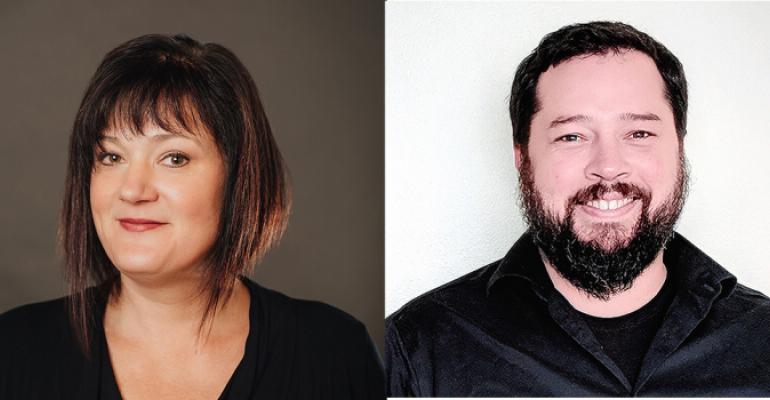Since the arrival of COVID-19, more clients are interested in moving their events online.
Making the shift can be a difficult process. How do we turn an in-person, three-day symposium into an engaging, relevant, online experience?
It’s unrealistic to plan a virtual conference where attendees are expected to sit in front of a laptop for 10 hours. Planners and clients alike understand this. Earning the attention of an audience working from home isn’t easy; they are being pulled in all directions: pets, children, spouse, chores, meals, TV, Netflix, scrolling social, watching the news, vowing not to watch the news. The list goes on.

Will your presentation win against so many distractions? Shakes Magic 8-Ball--Result: “Outlook not so good.”
So, how do we make an event work in the virtual space?
- Follow the playbook written by TV producers.
For better or worse, TV producers have perfected the art of capturing attention in one of the most distracting places possible: home. The endless television formats are the best models.
Scrambling to get our events online, we rushed past an important insight: When we lose the ability to meet in person, we can easily lose attendees. We all sense it; we all recognize it. We knew right away that the same format does not work online--and that is a really big deal!
If we want our events to be “binge-worthy,” the solution comes down to value. When a person chooses to attend an event, it’s because they see value in it:
- Entertainment value
- Educational value
- Emotional/spiritual value
- Financial value
During this global crisis and resulting isolation, we’ve seen all sorts of live events successfully pivot to the virtual world--but only when there is value. Musicians streaming live concerts are seeing a massive spike in popularity. Khan Academy experienced a 250 percent surge in users and as a result, had to plea for funding to increase server capacity. Since January, Zoom’s stock has more than doubled as businesses navigate how to function remotely. Even doctors are converting to telemedicine virtual visits to treat non-urgent patients from the comfort of home.
Yet, amid these success stories, many corporate conferences are trying to choose between cancellation or rescheduling to an unknown future date. Are they therefore valueless? No!
- Define your event. Design with intent.
Intention is the key to understanding why an event is successful or not. Before you design with intent, you need to define your event. We have to ask the same questions we’ve always asked:
- What type of event is this?
- Who is the audience?
- What is the value you’re offering the audience?
- What is the message you want your audience to take away?
Once you’ve defined the purpose of the event, apply it to your intent.
Imagine your typical “run of show” document that outlines everything that happens in your event in chronological order. From the opening doors to evening reception, every detail has been scheduled.
Now, add two new columns: “What is the value to the audience” and “How does this advance the purpose of the event?” We like to call it "WTF"--What’s This For?
If you have a hard time filling those columns in, your event is lacking intent. And if it’s lacking intent, it’s likely struggling to communicate it to its audience. And if it’s struggling to communicate to its audience in a live environment, what do you think will happen in a virtual realm? Shakes Magic 8-Ball--Result: “Failure is absolute.”
When we look at what TV producers have done successfully, we discover that value can take on different forms:
Entertainment value: This is perhaps the most obvious kind of value people get out of events. It makes an event more memorable. Game shows, comedy series, talk shows--there are so many ways to make people feel good. Every positive moment helps to reinforce the value of the event.
Educational value: If you know your attendees are hungry for knowledge, make sure the structure of the event is conducive to learning. Are people wanting to deep-dive on certain topics or get an introductory education on a wide variety of subjects? Consider the Netflix series “Tiger King” as an example of educational value.
Wait! What? Stay with us. “Tiger King” is a true-crime documentary. While we’ve been engrossed in the chaos of the show, Netflix did a brilliant job of exposing the big-cat industry and educating the world. Some 3.4 million viewers are now mortified on so many levels.
Financial value: Attendees rarely seek to receive direct financial value from an event. However, sponsorship is the primary motivator. Be sure to identify what the attendees need to take away from the event--i.e., new contacts, best practices, updated industry news, etc. Once you identify the key takeaway, make it as portable as possible. If you can send your attendees home with a theoretical pot of gold, everyone wins.
Emotional/spiritual value: Tug at those heartstrings. This is so important when developing a fundraising event. A speaker or video montage that connects with the audience on an emotional level is one of the best ways to remind everyone why they are there to support the cause. If you’ve ever had goosebumps during a really great movie scene, you’ve experienced frisson. Frisson is the sense of being connected to others. “Britain’s Got Talent” is great at this effect--just scroll their YouTube (think Susan Boyle). No one leaves an event more motivated than someone who has an emotional or spiritual experience.
When stay-at-home orders and shelter-in-place mandates began, it was easier to think that adding a camera and an internet connection would pivot our events to the virtual realm. We quickly realized that our traditional event format just doesn’t translate well to the online world. Shakes Magic 8-Ball again--Result: “It is decidedly so.”
Numerous differences come with a change in medium. Our team did not anticipate what we now refer to as “the living room challenge,” the idea that we must now compete against all other distractions in our attendees’ lives. With more time on our hands to reflect, we are taking an introspective look into why we face this problem in the first place.
We’re all guilty of binge-watching something we love, right? If it is possible for someone to watch the entire “Mandalorian” series in a weekend, how do we create more intentional content so that attendees are engaged in our virtual events? These questions are important to reframe how we define an event and design with intent. The fact is, people will choose the value proposition that is better for their time.
Now more than ever, we are ready to bring a new focus to value. We want to help each client define their purpose, make deliberate, intentional choices in constructing content around that purpose, and add value every step of the way. It’s not enough to simply want the event to be successful--that is a requirement.
We want our events to be bingeworthy. Don’t you? Shakes Magic 8-Ball--Result: “Signs point to yes.”
Niki McKay is owner and Brad Ramaley is production manager at Blue Danube Productions, based in Seattle.





